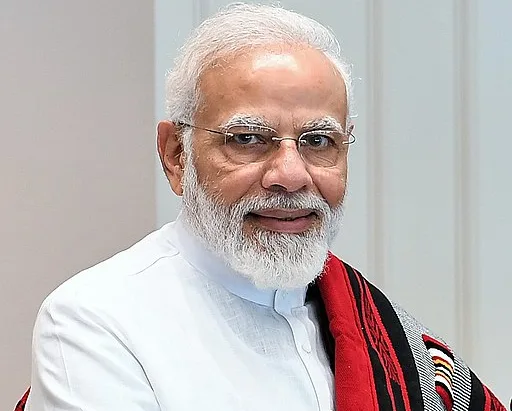Prime Minister Narendra Modi expresses deep regret for the recent collapse of the 35-foot statue of the Maratha King at Rajkot Fort, Maharashtra
On August 30, 2024, Prime Minister Narendra Modi offered a heartfelt apology for the collapse of a significant 35-foot statue of Chhatrapati Shivaji Maharaj at Rajkot Fort in Maharashtra’s Sindhudurg district. Speaking at the foundation stone laying event for the Vadhvan Port project in Palghar, Modi conveyed his remorse and deep respect for the Maratha warrior, whose statue fell on August 26.
Modi addressed the crowd, acknowledging the emotional weight of the incident for those who revere Shivaji Maharaj as a divine figure. “Chhatrapati Shivaji Maharaj is not just a historical figure but a deity for many. I bow my head at his feet and apologize to all those who are deeply hurt by this incident,” Modi said. His apology came in response to a wave of criticism and outrage following the statue’s collapse.
Embed from Getty ImagesThe statue, which had been unveiled by Modi himself in 2023 during Indian Navy Day celebrations, was intended to honor the legacy of Shivaji Maharaj. The collapse of the statue has sparked widespread controversy and political debate. Chief Minister Eknath Shinde revealed that the statue was designed and constructed by the Indian Navy. The Navy has since launched an investigation into the incident.
Concerns about the statue’s condition had been raised by the Maharashtra Public Works Department (PWD), which flagged issues with rust accumulation on the statue just days before its collapse. The PWD’s warnings had not been addressed in time, contributing to the incident’s fallout.
The political implications of the collapse are significant. Opposition leaders have seized upon the incident to criticize the government, accusing it of failing to respect and maintain national monuments. The collapse has become a focal point in the ongoing political discourse, with critics arguing that it reflects poorly on the government’s management of public projects.
In addition to the political fallout, the collapse has intensified scrutiny of the government’s handling of national heritage sites. The incident has prompted calls for stricter oversight and maintenance protocols for public monuments.
In response to the incident, a structural consultant named Chetan Patil has been arrested. Patil, who was involved in the statue’s construction, is under investigation for potential negligence. The arrest highlights the serious legal consequences tied to the failure of such high-profile projects.
Analysis
Political: The collapse of the Chhatrapati Shivaji Maharaj statue has become a significant political issue, reflecting the broader challenges facing the Indian government. Prime Minister Modi’s apology is a strategic move to address public outrage and mitigate political damage. The incident has provided opposition parties with an opportunity to criticize the government’s effectiveness in managing national projects and maintaining public trust. By apologizing, Modi aims to demonstrate accountability and restore public confidence. However, the ongoing investigation and legal actions against individuals involved in the statue’s construction will further impact the political narrative, influencing both public opinion and parliamentary debates.
Social: The collapse of the statue has resonated deeply within Indian society, particularly among those who view Chhatrapati Shivaji Maharaj as a revered cultural and historical figure. The incident underscores the societal importance of preserving and respecting historical monuments, which serve as symbols of cultural identity and heritage. Modi’s apology acknowledges this cultural significance and seeks to address the emotional impact of the collapse on Shivaji Maharaj’s followers. The controversy surrounding the statue’s condition and the subsequent investigation highlight the broader societal expectations for accountability and proper stewardship of national symbols.
Racial: The statue’s collapse is not directly related to racial issues but intersects with national identity and cultural heritage. Chhatrapati Shivaji Maharaj is a symbol of regional pride and historical significance in Maharashtra, reflecting broader themes of regional identity within the context of a diverse and multi-ethnic India. The incident may influence discussions on how regional symbols and historical figures are represented and maintained across different states, affecting perceptions of regional versus national priorities.
Gender: While the collapse of the statue itself does not have direct gender implications, it intersects with broader discussions on representation and recognition of historical figures. The narrative around Chhatrapati Shivaji Maharaj, a prominent male historical figure, reflects gender dynamics in historical representation. However, the focus remains on the management and preservation of national symbols rather than gender-specific issues.
Economic: The economic implications of the statue’s collapse are significant, particularly in terms of costs associated with repairs, investigations, and legal proceedings. The incident may lead to increased scrutiny and potentially higher costs for public projects and monument maintenance in the future. Additionally, the controversy could impact the reputation of the organizations involved in the statue’s construction and management, potentially influencing future public and private sector projects. The investigation and subsequent legal actions will also have economic ramifications for the individuals and organizations involved.
